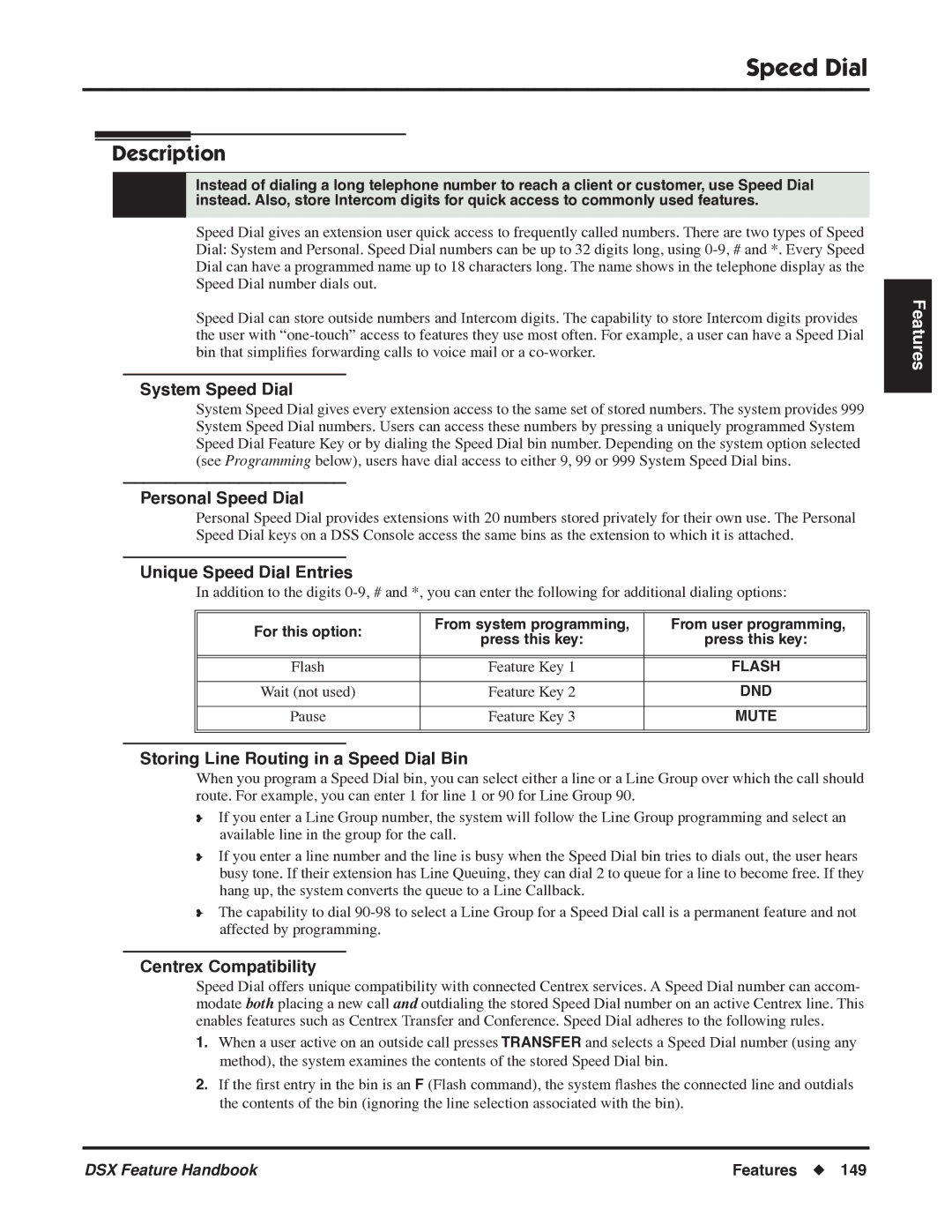
Speed Dial
Speed Dial
Description
Instead of dialing a long telephone number to reach a client or customer, use Speed Dial instead. Also, store Intercom digits for quick access to commonly used features.
Speed Dial gives an extension user quick access to frequently called numbers. There are two types of Speed Dial: System and Personal. Speed Dial numbers can be up to 32 digits long, using
Speed Dial can store outside numbers and Intercom digits. The capability to store Intercom digits provides the user with
System Speed Dial
System Speed Dial gives every extension access to the same set of stored numbers. The system provides 999 System Speed Dial numbers. Users can access these numbers by pressing a uniquely programmed System Speed Dial Feature Key or by dialing the Speed Dial bin number. Depending on the system option selected (see Programming below), users have dial access to either 9, 99 or 999 System Speed Dial bins.
Personal Speed Dial
Personal Speed Dial provides extensions with 20 numbers stored privately for their own use. The Personal Speed Dial keys on a DSS Console access the same bins as the extension to which it is attached.
Unique Speed Dial Entries
In addition to the digits
|
|
|
|
|
| For this option: | From system programming, | From user programming, | |
| press this key: | press this key: | ||
|
|
| ||
|
|
|
|
|
|
|
|
|
|
| Flash | Feature Key 1 | FLASH | |
|
|
|
|
|
| Wait (not used) | Feature Key 2 | DND | |
|
|
|
|
|
| Pause | Feature Key 3 | MUTE | |
|
|
|
|
|
|
|
|
|
|
|
|
|
|
|
Storing Line Routing in a Speed Dial Bin
When you program a Speed Dial bin, you can select either a line or a Line Group over which the call should route. For example, you can enter 1 for line 1 or 90 for Line Group 90.
❥If you enter a Line Group number, the system will follow the Line Group programming and select an available line in the group for the call.
❥If you enter a line number and the line is busy when the Speed Dial bin tries to dials out, the user hears busy tone. If their extension has Line Queuing, they can dial 2 to queue for a line to become free. If they hang up, the system converts the queue to a Line Callback.
❥The capability to dial
Centrex Compatibility
Speed Dial offers unique compatibility with connected Centrex services. A Speed Dial number can accom- modate both placing a new call and outdialing the stored Speed Dial number on an active Centrex line. This enables features such as Centrex Transfer and Conference. Speed Dial adheres to the following rules.
1.When a user active on an outside call presses TRANSFER and selects a Speed Dial number (using any method), the system examines the contents of the stored Speed Dial bin.
2.If the first entry in the bin is an F (Flash command), the system flashes the connected line and outdials the contents of the bin (ignoring the line selection associated with the bin).
Features
DSX Feature Handbook | Features ◆ 149 |
